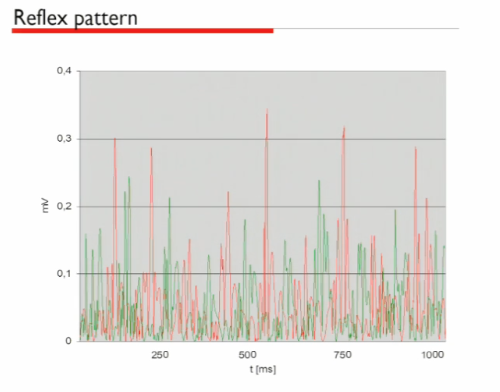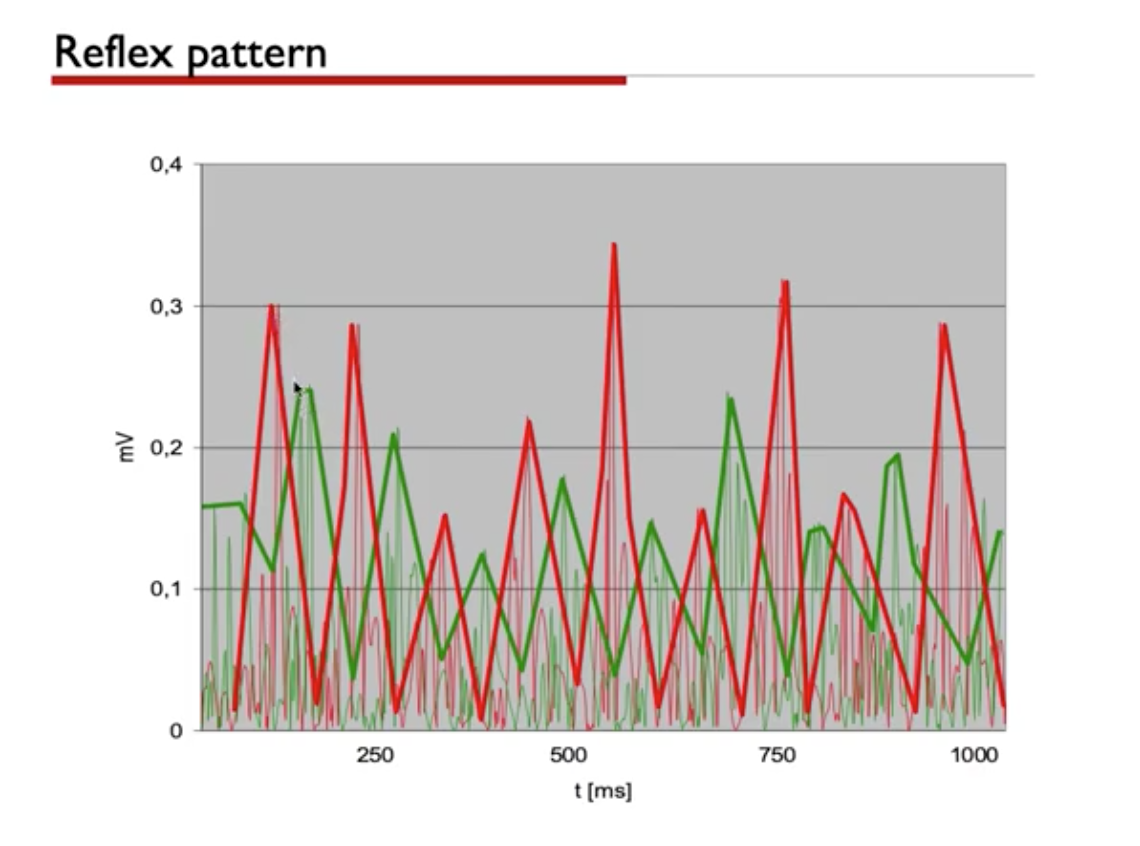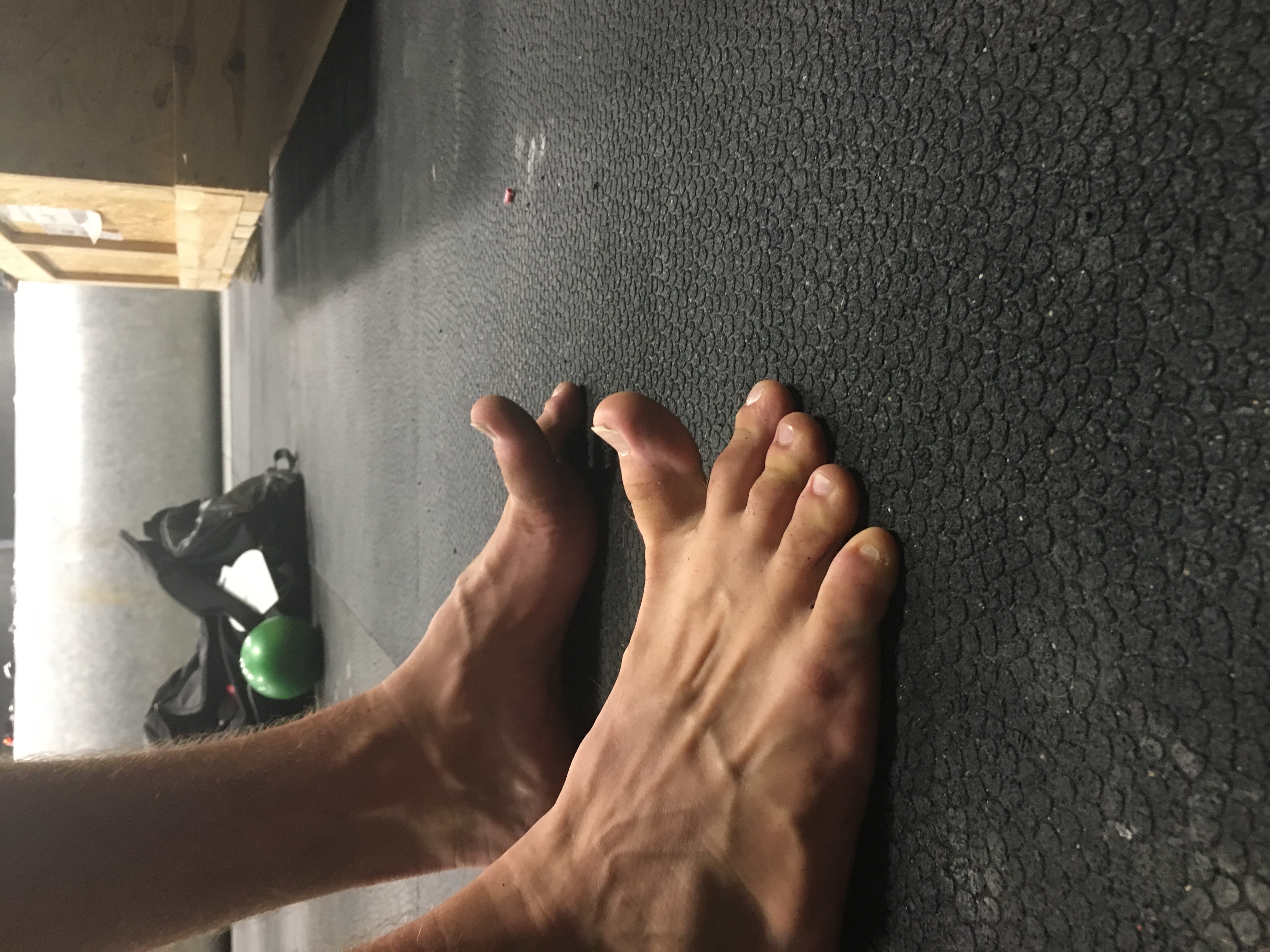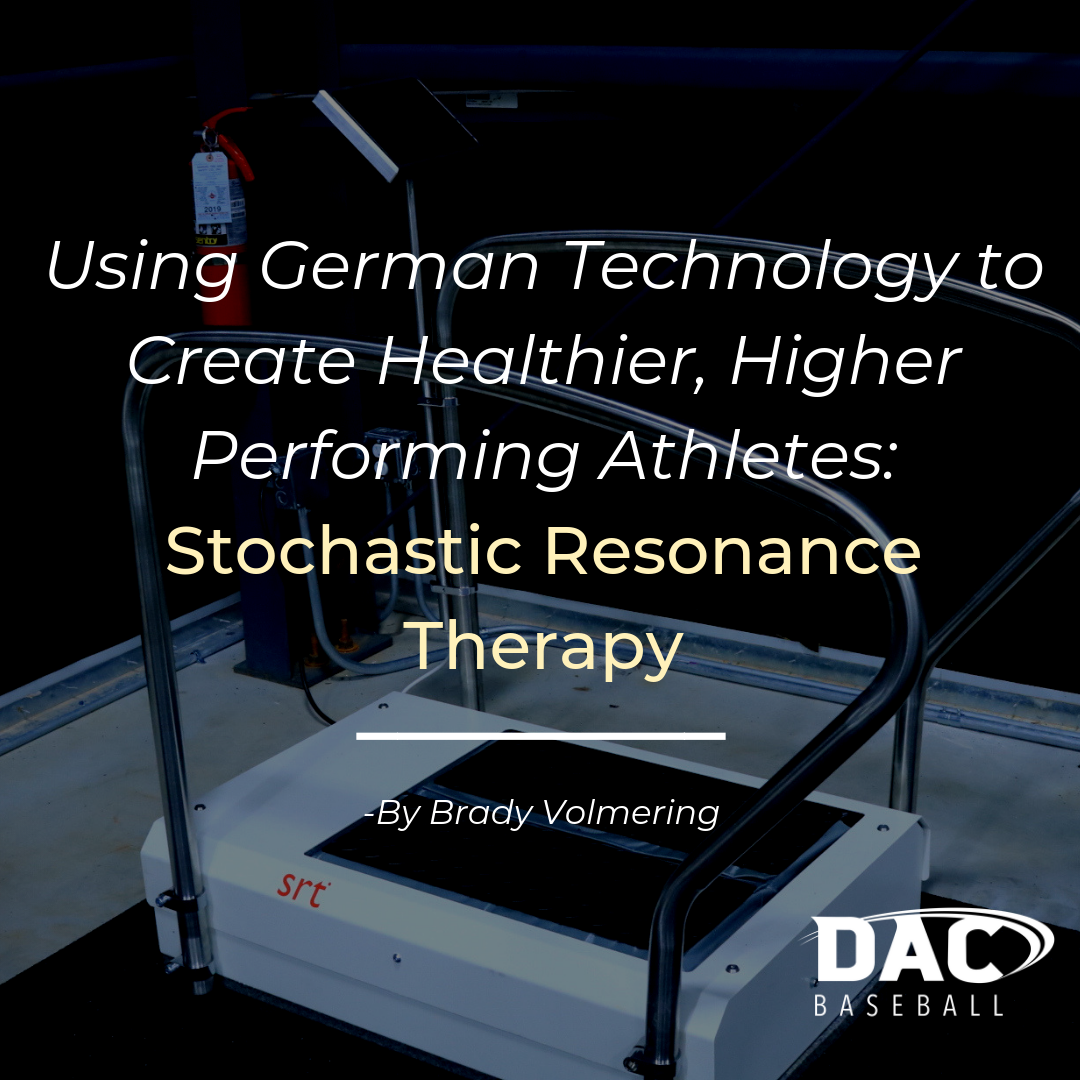It all started with a podcast.
In an attempt to stay largely outside the conventional baseball bubble, I do my best to listen, read, and generally consume as much training material outside the baseball community as I do inside of it. In fact, if I were to put a number on it, I would say there is at least a 70/30 split in favor of “other disciplines” when it comes to getting my information about how to best train baseball athletes.
On this particular day, I was listening to a Podcast called “Jacked Athlete” by Jake Tuura, and he had a guest on, Kyle Harris, that was questioning the role of the warm-up. According to Harris, and his German influencer Dr. Dietmar Schmidtbleicher, much of the warmup was simply a waste of energy, and was potentially leading to increased fatigue. This increased fatigue could be elevating the potential for injury, specifically near the end of the sporting event.
This no doubt peaked my interest, but not nearly as much as what came next. The conversation casually switched from discussing the importance (or non-importance?) of a warmup, to a German technology that was creating massive benefits for their athletes.
What was this technology?
Stochastic Resonance Therapy
According to Harris, this technology, by providing random vibrations at a very specific frequency and noise level, was able to provide training benefits that are otherwise nearly impossible to get. I was hooked.
The podcast led me into another talk, this time from Dr. Schmidtbleicher himself, on the design and effectiveness of the technology, known as stochastic resonance therapy. According to the presentation, the Stochastic Resonance Machine has been used for the past 30 years to not only help athletes increase their performance and reduce their risk of injury, but also to help the general population. It has been shown to assist in resolving diseases such as Parkinson’s and Multiple Sclerosis better than anything previously seen. How had this tech not yet made it’s way into the US?
PS: it had. Kyle Harris, the podcast guest, was the first to bring the equipment to the states, several months before we contacted him about ours.
What it Does
Stochastic Resonance is said to have multiple benefits:
- Improved Reciprocal Inhibition
- Improved Afferent Sensory Information Processing and Response
- Decreased Risk of Injury
Let’s break these down, 1 by 1.
Reciprocal Inhibition
Guided by Sherrington’s Law, reciprocal inhibition states that when an agonist contracts the antagonist will relax. And we know from research by Alexei Medvedev, the faster the athlete is able to relax, the better they will be. Below is a graph that demonstrates the effect 8 weeks of SRT training had on a group of sport science students:

And here is that same graph with the new found pattern highlighted:

With this graph, we can see how much better the students became at alternating their antagonist/agonistic muscles. It’s worth noting that this is NOT something that can be conventionally trained. You cannot control, at this speed, what your agonist and antagonistic muscles are doing. However, SRT technology allows this aspect to be effectively trained, even without conscious control.
Afferent Sensory Information Processing and Response
Afferent information is information that is traveling from your senses to your brain/spinal cord. In other words, this is the pathway that allows you to effectively react to what is going on around you. For instance, let’s say you’re walking on a path and look up into the sky at an airplane. While you’re checking out the plane, you come upon a tree root. You trip. This information is quickly relayed to your spinal cord (in under 50 milliseconds), your stumble reflex is initiated, and you catch yourself before falling flat on your face. Good thing you were able to make effective use of that afferent sensory info!I
Decreased Risk of Injury
Much of the research that has been done in this regard has been in relation to re-injury, specifically of the ACL, post-surgery. Here’s how it works:
There has never been a ligament tear/rupture recorded at greater than 200ms. Much of the training that is done to prevent/rehab these types of injuries, do not occur at this level of speed.
For example, standing on an airex pad produces contractions with a length of 350ms. In other words, it takes the muscle 350ms from signal to maximal contraction. This is much too slow! By the time that contraction takes place, the ligament has already been torn.
If we take the example from above, the one where we were trying to prevent our head from smashing into the tree root, we see a contraction take place in under 50ms. How? That contraction is not being ignited from the brain. Instead, it is being sent from the spinal cord. The spinal cord can act without the brain, and it is its’ job to keep our body safe and healthy.
With the technology of the SRT machine, we are able to imitate this contraction speed.
How it Works
The original SRT machine was built by Dietmar over 30 years ago and it entailed use of a pair of skis, a skateboard, washing machine parts, and a treadmill. Never fear, however, the current version is a little more advanced than that.
Although I don’t completely understand how the machine works, here’s my best description:
There are two settings on the machine that are used to adjust the amplitude/frequency of vibration, as well as the noise within the vibrations. These are called “Trim” and “Noise”.
Trim represents how quickly the machine vibrates. Here is the machine working with a Trim of 1, Noise of 0:
Here is the machine working with a Trim of 12 (max), Noise 0.
The second setting is the Noise. This setting controls how much randomness there is within the vibrations. Here is the machine working with a Trim of 5, Noise of 0:
And here is the machine working with a Trim of 1, Noise of 5:
You’ll notice that as the Trim goes up the plates vibrate with greater frequency, and as the Noise goes up there’s more randomness to those vibrations.
This randomness creates unique benefits that no other device, to my knowledge, can provide.
The stretch receptors that provide afferent feedback to your brain and spinal cord have a threshold that must be exceeded in order to be activated. Without randomness, these sensory receptors will not be given enough stimulation on the machine to be activated. However, when noise, or randomness, is introduced into the vibrations, your body now has to respond to this randomness in order to maintain your equilibrium and balance! By doing so, we are training the reflexes in a way that can normally only be trained in real world conditions, such as our tree root example mentioned earlier.
Implications for Rehab
The typical protocol for rehabbing an ACL injury goes something like this:
- Walking in a brace while performing very low intent strengthening exercises for muscles around the knee – the goal during this phase is to achieve full extension ROM of the knee
- Light bicycle riding, single leg balance exercises progressing from flat ground to unstable surfaces, and continued use of exercises to build muscle around the knee
- Machine based exercises (constrained movement) to get athlete closer to full activity without causing overdose of stress
- *9-12 weeks*: Re-Introduce regular exercise – includes very controlled plyometric and bodyweight exercises
From there they progress into a return to running protocol and eventually a return to full play protocol. What I wanted to point out was that it normally takes 9-12 weeks for them to get back into any normal type of exercise, and even then, this is very constrained and controlled exercise.
I mentioned previously in this article that standing on an airex pad and doing other “conventional” type of balance exercises resulted in muscular contraction times of 350ms or more. So while the idea of challenging balance with this type of training is to reintroduce the necessary proprioception and reflexiveness into the system, we can see that it is not, in fact, actually doing so.
We can see here, in a typical return to play protocol, that there is never an instance in which the muscular contraction time of 200 ms or less is ever specifically targeted. In essence, we are FAILING to address that which actually caused the issue: the ligament tears at 200ms or less. If we never train at that speed, either in the prehab or the rehab process, our risk of injury goes up.
It’s worth noting here that practicing and playing in your sport will in fact involve instances in which your body must react to unforeseen circumstances to cause these high speed reactions. However, these instances are uncontrollable and are normally not consciously trained. In addition, as stated previously, they are ignored in the conventional return to play protocol.
By using the SRT machine, we will be able to more specifically target these high speed contractions that are taking place at the speed of sport, or in other words, 200ms or less.
What About the UCL?
When I first heard about this technology, the very first question that popped into my head was this: can we take what the Germans have done for the ACL and apply it to the UCL?
While I couldn’t find any studies or information regarding the speed of a UCL tear (I would assume all ligaments would tear at a similar speed, but this is beyond my expertise and is simply a guess), I did find this, courtesy of Seroyer et al:
“This rapid motion delivers the arm from as much as 175° of external rotation to 100° of internal rotation (at ball release) in only 42 to 58 milliseconds”.
So we know that one of the most stressful phases of the throw occurs in 60ms or less. I am not going to say for a fact that UCL tears would then occur within that time frame, but I think it’s fair to say that, with the information we currently have, it appears as though SRT may be one of, if not the most, effective way to prehab and/or rehab the UCL, when of course used in combination with a full fledged training or rehabilitation program.
Think about that. I will NEVER be in the business of guaranteeing health or complete non-risk of injury. BUT, that doesn’t mean we shouldn’t find the absolute best training to REDUCE our risk of injury. I think this technology can provide a huge step in the right direction towards healthier arms.
With that being said, if anyone would like to discuss this topic further, or has additional information that would be useful, please get in contact with me and I would love to talk more.
Additional Benefits:
According to the SRT Machine manual, here are a list of additional benefits this machine will provide:
- Quick and efficient information processing: we receive between 100 thousand million and 1 billion information units every second through our receptors. These receptors are continuously relaying this info to our body. Obviously, we cannot process all of this information consciously, but we must decide what is useful and what is not. With SRT training, it is constantly taking us out of a state of homeostasis and into a state of imbalance. Our body wants to stay in balance, so it will get better and better at interpreting and reacting to these signals to bring us back to balance. Better information processing on the machine = better information processing in real world conditions.
- Releasing Neurotransmitters/Messengers: the brain is only interested in that which is new or unknown. A constant and never changing stimulus provides very little need for the brain to work. Due to the random nature of the SRT machine, a flurry of neurotransmitters, dopamine specifically, will be released during each training session. This acts as an activator for the response, increasing our ability to receive and respond to stimuli more efficiently.
- Side Note: From taking Christian Thibadeau’s Neurotyping course we know that athletes with higher dopamine levels tend to be better “natural” athletes and tend to learn new skills easier and faster. By releasing dopamine, the SRT Machine may be allowing us to take athletes that normally have less effective amounts of dopamine, and as a result a harder time learning new skills, and turning them into better athletes due to the chemicals that are released within their brain.
- Training Spinal Cord Rhythm Transmitters: The control processes involved in walking are very complex, even if it may seem like a simple task. The task is controlled by a network of nerve cells, known as the central pattern generator. The SRT activates this network of cells thereby making this process more efficient.
- Although I don’t have research to back this up, my guess is that improving this network will not only improve walking technique, but running technique as well. In fact, we have seen some very positive early results in running speed, which will be included at the end of this article.
- Stimuli for preflex and reflex: each time we walk or run we are being governed by our reflex system. For instance, each time your foot is approaching the ground it needs to know how much tension to create to successfully strike the ground and maintain your desired gait speed/cycle. The SRT forces the athlete to continually react to minor random changes in the surface it is standing on, therefore increasing the efficiency of this preflex/reflex system.
- Imagine you’re running at top speed and your body mis-calculated the amount of tension your foot would need to strike the ground with. It goes limp right before you’re supposed to land. What happens? You trip and fall and likely sprain or break your ankle. This is an extreme example, but the SRT Machine can help our body calculate the amount of tension needed to perform optimally in these situations.
- Reactivation and protection of nerve and muscle cells: for muscles to be trained they have to be stimulated by nerve cells. Missing stimuli means degenerative muscle. By continually activating the nerve cells through randomized vibrations, the SRT allows us to better maintain our nerve and muscle connections.
- Let’s say you’ve recently been sidelined with an elbow injury. During healing you are put in a cast and aren’t allowed to move your arm. As a result your muscle, and nerve cells, degenerate. By using the SRT, we will be able to re-activate these cells earlier in the rehabilitation process to get you back into playing form sooner.
- Activation of the cerebellum: the cerebellum receives our sensory info. By providing randomized sensory info, we will be able to better train and utilize this portion of our brain, vital when it comes to correctly receiving and utilizing sensory info.
- Improvement of bone metabolism: the transmission of the SRT vibrations to the bones is said to increase the strength of the bone by more than 390% when compared to other vibrational technology (done in animal studies).
- This is definitely applicable to the general population but not so much for my audience here as athletes will generally be challenging their bone structure through normal sporting activity and weightlifting.
Early Results
Thus far we have only used this machine on three individuals: myself, Jarod Burton, and Nathan Strobel, all of which will be coaches at the new, soon to open Marucci Clubhouse in Springfield, Missouri. There will be more on this announcement later. For now, here are some of the results we have seen as a result of utilizing the SRT Machine:
1A – Improved ROM #1:
We’ve had several instances of some pretty incredible ROM increases. First and foremost, here’s a video of Jarod lying on the SRT, holding a 2lb plyoball, at max ER (passive). Note both the starting and ending position:
My personal feel when performing this exercise (didn’t get it on video), was that it instantly released my pec and allowed an additional 10-15 degrees of ER with zero effort. All 3 of us had a similar experience of some pretty drastic increases in shoulder ER.
1B – Improved ROM #2:
Big toe extension is a pretty vital piece of the gait cycle and is something we’ve been paying a lot of attention to. Here’s Jarod’s big toe extension ROM on July 5th, before hopping on the SRT:
And here it is after 2 sessions on the SRT Machine:

Why is big toe extension important? Picture the gait cycle. As your foot is getting ready to leave the ground the big toes must go into extension. Without that ROM, it has to come from somewhere else. For example, it could come from the ankle, the knee, etc. The important thing isn’t where it would come from, but the fact that a lack of big toe extension causes the toe to, well, not work like a toe! This can cause problems up the whole chain.
2 – Increased running speed:
We have thus far performed 4 different sessions of before/after top speed times on the SRT. 1 from Jarod and Strobel, and 2 from myself. Here are the results:
Jarod
Before: 1.095, 1.091
After: 1.095, 1.087
Strobel
Before: 1.27, 1.287
After: 1.278, 1.253
Brady #1:
Before: 1.028, 1.016
After: 1.0625, 1.0075
Brady #2:
Before (only got 1 time): 1.212
After: 1.19, 1.216
You can see in each instance the best time was achieved AFTER utilizing the SRT Machine. Here are some clips of myself and Strobel utilizing the machine in between our runs:
It’s worth noting that we attempted to make the distances exactly 10 yards but failed to do so as a represented by the variance in times from “Brady #1” to “Brady #2”. Nevertheless, within each individual setting, we all ran faster after utilizing the machine.
Closing Thoughts
While I’m not going to pretend that this machine will “cure all”, I am extremely excited to have the opportunity to be one of the first to have and utilize it in the US (we have the 2nd machine ever brought over to the US). The Germans have done a great job in researching and finding applicable ways to use it both for their athletes and for the general and diseased populations, but I think we will be able to expand it’s use substantially to help prepare and recover our baseball athletes.
As of late, it seems all anyone is talking about is squatting, deadlifting, benching, and foam rolling. And while I think those were necessary modalities to bring into the baseball training arena, that just a few years ago would have been rejected, I also think it’s time to move on and dig deeper into how we can do a better job preparing our baseball athletes for the specific demands they will be put under in their sport.
I am excited to bring this piece of technology, with all of its’ potential applications, to the baseball world and take yet another step in figuring out just how good our athletes can get.
Resources
Podcast: http://jackedathlete.libsyn.com/kyle-harris-kyle-harris-questioning-the-role-of-the-warm-up-and-stochastic-resonance-therapy
Dr. Dietmar Schmidtbleicher Presentation: https://vimeo.com/146755872
Seroyer ST, Nho SJ, Bach BR, Bush-Joseph CA, Nicholson GP, Romeo AA. The kinetic chain in overhand pitching: its potential role for performance enhancement and injury prevention. Sports Health. 2010;2(2):135–146. doi:10.1177/1941738110362656
If you would like additional access to the publications discussing the validity of SRT technology, feel free to shoot me an email and I will be more than happy to share!
DAC Baseball is a baseball training provider for both the pitcher and the position player. If you’d like to receive more info on how to get started training with us, send an email to brady@dacbaseball.com or visit our sign-up link here.
